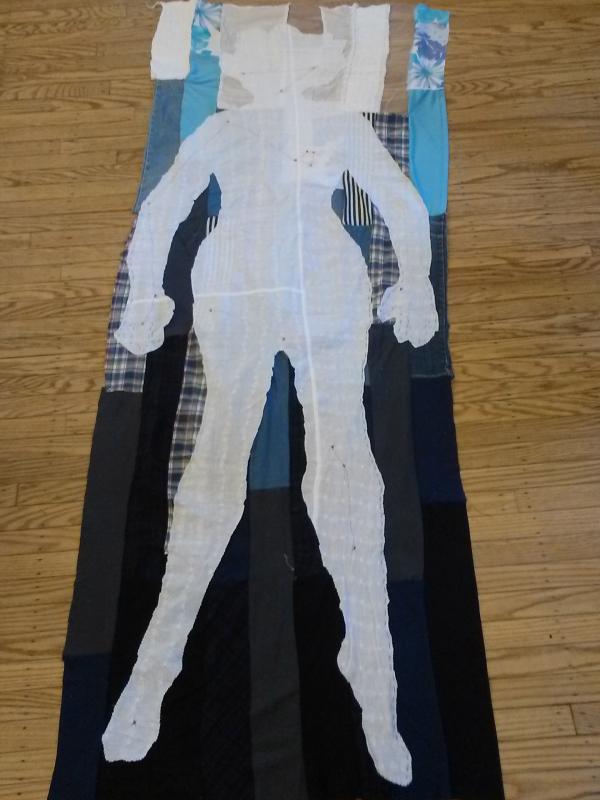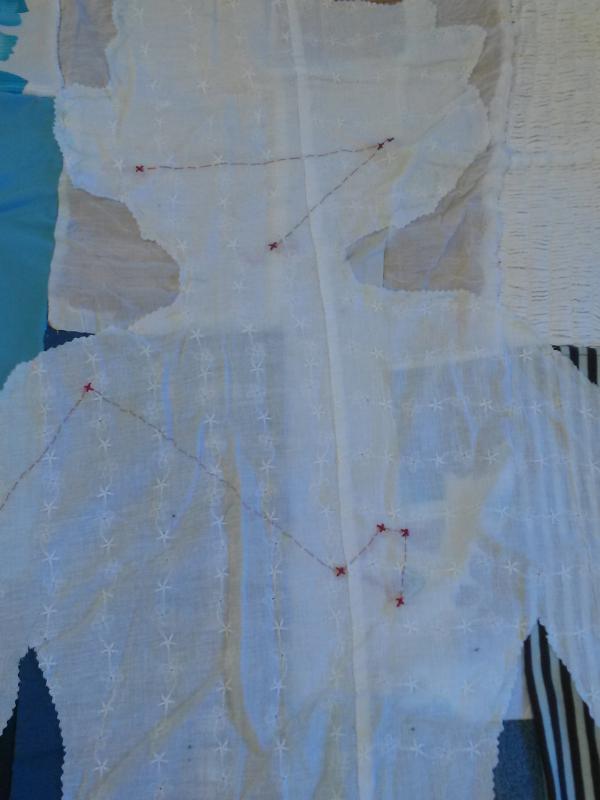Serendip is an independent site partnering with faculty at multiple colleges and universities around the world. Happy exploring!
Hummingbird's blog

Exploring Multiple and Intersecting Identities: Themes and Suggestions for Action
Exploring Multiple and Intersecting Identities:
Themes and Suggestions for Action
Hummingbird, Kma, and Cece Lee
Introduction
In Spring 2013, students working with Professors Jody Cohen and Alison Cook-Sather began facilitating focus groups to explore the way Bryn Mawr was supporting and could better support its increasingly diverse student population. This semester the three co-writers of this paper joined those facilitating focus groups as fellow student facilitators. While the groups were originally focused on the experiences of international students, we’ve broadened them this semester to look at all students on campus and their varied identities – acknowledging that even domestically we have a very diverse student population and that all members of our community face different challenges because of the way they identify themselves and feel perceived by others.

Students as Teachers
Blackburn's book highlighted for me the potential in the overlap between school and "extracurricular" spaces. I couldn't help but think to Ceballo's "Bilingual 'Neighborhood Club'" and Lee and Hawkin's community based after-school programs when reading about the Attic, and appreciated the not-school space that the Attic made for students. However, I was most interested and engaged when reading the section about the Speaker's Bureau. I've found myself particularly and repeatedly interested lately in the ways students can act as educators and this program within the Attic was one space in which the voices of students were really important to transforming how teachers and other students understood homosexuality and homophobia.
I'm wondering now how students can be more frequently empowered to do this kind of educating within schools or whether the distance of an out-of-school program is needed to facilitate students as teachers?

Emotions and Readings
I'm going to be completely frank here (and probably expose myself as a bit of an emotional mess) but I teared up multiple times while reading Delpit's "Multiplication is for White People." I felt so inspired and so empowered by her highlighting of good teachers – "warm demanders" – and it brought back memories of teachers who did that very work for me. I'm also having a really meta moment: recognizing that I'm pushing myself to stay awake now to post this instead of going to sleep and doing it in the morning out of my respect for Jody as a professor (still coming in late –– but hoping my presense at both the Race and Diversity Town Hall and Toni Morrison's talk at Swarthmore this evening act as a reasonable excuses!). In the same way that students in Delpit's writing were willing to be pushed and to push themselves, I've found myself voluntarily doing more work and spending more time in courses where I know my professor or teacher really cared about my learning and my identity as a whole person. And I appreciate this meta-cognitive moment for my learning.

Anti-Vignette
I don’t feel I can write about my praxis in this forum. Even without naming students or sharing identifying information, the dialogue we have in our focus groups is so personal and vulnerable making that I don’t want to either expose people by reflecting on moments in the groups or make them personally uncomfortable when seeing the way I’ve reflected specifically on a moment in the work (by telling a vignette).
In spite of avoiding or rejecting the idea of writing a vignette on this Praxis, I will reflect on an important moment of connection I had with theory and experience within the Praxis. In our group on Sunday, I used educational theory to help reflect with our participants on the meta-processes happening in the sharing they were doing. After a moment of tension, we reflected together on Ellsworth’s idea that true dialogue is impossible and acknowledged that we were all coming into the room with different assumptions about each other’s identities. We also acknowledged the immense listening and openness required to understand – even partially – the many layers of identity we all came with. At the tea for the Identity Matters 360º yesterday, one of the professors mentioned that she doesn’t see a person as a single identity or whole being, but instead as many layers and intersections. I definitely see this play out in all of the focus groups we’ve held, and I appreciate the way it complexifies our understandings of topics, events, and each other.

Planning for Sharing
"What does it mean to only have these conversations in the classroom?"

Sleeter and Methods for Teaching
I was excited to read the Sleeter because it was one of the first readings we had that offered concrete examples and ideas for way teachers could think about their teaching. I especially appreciated the suggestion to learn about students' communities and get to know where their positionality in order to better support learning, particularly because this is something I've thought a lot about in the context of a theory called "threshold concepts." Threshold concepts as I've come to understand them are extensive, transformative, learning experiences that utterly challenge and shift the way we approach a body of content, a discipline, or our understanding of ourselves.
The relevance of threshold concepts to Sleeter is the idea that threshold learning moments can happen and be supported by incorporating personal knowledge/expertise into theoretical and classroom learning. I've thought about this will a Bryn Mawr faculty member with whom I worked – and we discussed the way that students we've observed who've struggled to understand key concepts (within 360s specifically) have passed over that threshold with the support of personal connection-making:

Quilt
I originally made this quilt for an art class while abroad. The theme of the class exhibition was mapping, and I decided to make that very personal and map my body. I chose the medium of quilting because my grandmother and great-grandmother both quilted and because of it's association with traditionally feminine crafting techniques. I wanted to disrupt and question traditional assumptions about feminitity – leaving the edges rough and patches unfinished.

The body on the quilt is a cut-out of my own body, and the red crosses embroidered into it mark some of my visible and invisible scars. I wanted to make visible my vulnerabilities and "flawed" spots, aspects of myself that tend to remain covered up, hidden, or silenced.


Praxis – Identity Focus Groups
My praxis placement is based on-campus, where I'm working to facilitate conversations about identity and perception of identity. The goal of the groups is to offer suggestions to the President's office to make changes on campus which will better support students from diverse backgrounds on campus. The week before break, I had the opportunity to co-facilitate a focus group for the first time, and just this week I facilitated my second group. It was a rewarding and challenging experience. I needed to figure out how to act as an engaged and active listener, while also guiding the participants to think critically about themselves, taking notes, thinking about broad themes, and coming up with follow-up questions to responses. It's a balancing act that I imagine is similar for teachers leading discussions –– who also need to recognize the themes their students are bringing up and challenge their students (and themself) to think more deeply about the content. I also have to be aware of my own positionality. Sometimes my identities overlap with those of the participants, but often they do not or they simultaneously overlap in some ways and don't in others. And even with overlap, opinions and experiences differ enormously. This experience has echoed my understanding of Ellsworth's theories on dialogue. However, it has also reinforced my belief that in spite of a necessary failure to ever entirely understand one another, dialogue with others is still important to and even necessary for knowledge building.

Fiction and Anti-Racist Activism
For my inquiry project, I’d like to look more critically at anti-racist activism that has occurred at Bryn Mawr and similar institutions both historically and more recently. I’ve been feeling both inspired and charged by the #MoHonest movement currently happening at Mount Holyoke, as well as the support that Bryn Mawr’s zine for people of color – Leverage – has shown in solidarity with that movement. I’ve also been reflecting on the Perry House movement that occurred last year, and after reading two novels that both examined race in America and academia (On Beauty by Zadie Smith, and Americanah by Chimamanda Ngozi Adichie) I want to represent, examine, and critique activism movements by writing a piece of fiction about an anit-racist activist movement on a fictional liberal arts college campus. I imagine this will take the form of a short story, though I'm currently imagining the narrative form will be less of a straightforward narrative and more post-modern, involving fictional testimonials from a variety of characters related (deeply or marginally) to the movement – possibly along the lines of The Savage Detectives by Roberto Bolaño.

Student Identity, Student Voice
My position as a student has formed a strong and central part of my identity for almost as long as I can remember. My interactions in the classroom served as the basis not only for life-long learning, but also for evolving understandings of my identities. So it makes sense to me that much of the shifting and growth I’ve done in understanding my identities has come in the context of my identity as a student. I identify as an upper middle class, cisgendered, queer, white, atheistic, half-New Zealand, Brooklyn-raised woman. As I’ve studied and lived in different environments, as I’ve moved from Brooklyn to Bryn Mawr to Denmark and back, I’ve claimed, moved through, and even discarded different aspects of my identity in varying degrees. Being able to own each of these identities now and feel comfortable introducing myself as them is a state that has been a long time coming.
One integral aspect of my identity as a student is my voice, and it is through the lens of student voice that I explore the different aspects of my identities. I focus on race, class, and gender because those are the three aspects of my identities I have been thinking critically about most recently, and because I think these three aspects impact my interactions with others most strongly.
I. Race and Class Privilege


